In the 17th century, Hoi An (Quang Nam) was well-known as the bustling trading port where the businessmen all over the world came there and exchanged the goods together; these businessmen majorly come from Chinese and Japanese. After a long time, Japanese and Chinese merchants immigrated to Hoi An and built the Chinese residence area and Japanese residence area in the past. Experiencing the changes and integration, Chinese culture harmonized with Vietnamese culture and remains traits until now.
In this article, Travel Sense Asia will introduce to you some remarkable traits of Chinese in the architecture, the cuisine of Hoi An as well as in the beliefs of Hoi An people that you can easily realize when traveling there.
History of Chinese in Hoi An
In the late 16th – early 17 century, thanks to the open policy of the Nguyen dynasty, Chinese from three provinces of China: Guang Dong, Fujian and Hunan moved to the Hoi An international trading port to do business with dealers from the other countries there.
Then, the “Seaway ban” policy of the Ming dynasty was taken action, Chinese in foreign countries did not have to come back to their countries and after that, another group of Chinese merchants having approved the Ming dynasty and denied Thanh dynasty came to Hoi An. With the approval of Trinh Lord of Vietnam, they immigrated in Hoi An; they built the Chinese residence area, assembly halls, and Chinese pagodas and continued to do business there.
Time passed, these Chinese have lived in harmony with local Vietnamese; two range of Cultures Vietnam and China were exchanged to create harmony in the Hoi An’s culture. Some Chinese got married to Vietnamese and born half-breeds called Minh Huong people living in Hoi An until now. They have lived there and remained the traits of the coherence of Vietnam and China there.
Architecture in Hoi An
When visiting Hoi An, tourists can realize the traces of Chinese in architecture most through observing the Chinese assembly halls and Pagodas.
After Chinese immigrated successfully in Hoi An, groups of Chinese living there constructed the assembly halls as a temporary stay of Chinese doing business in Hoi An as well as the temple of Mazhu goddess to remind Minh Huong people and Chinese merchants about their hometown.
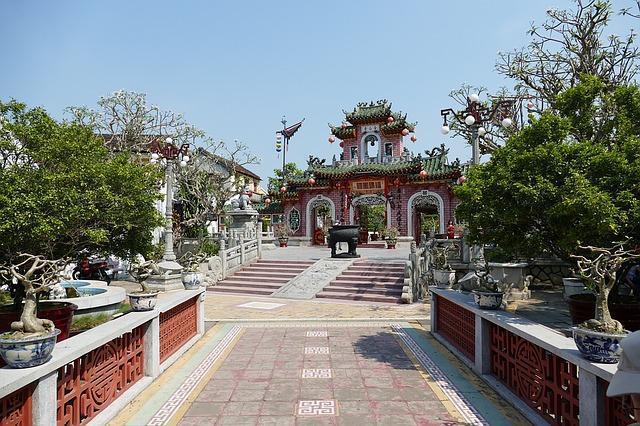
These assembly halls were built in traditional Chinese architecture with the conception of Ying and Yang in-universe and symmetry concepts. The gate of the Chinese assembly hall often includes 2 small gates and one main gate. There are two lions standing on two sides of the entrance of the assembly hall; you can see these holies when visiting Fujian assembly Hall. These lions in the Chinese belief are guardian angels for the whole animals; they stand in the entrance of the assembly hall with the responsibility of guardians to protect for the Assembly hall.
Big pillars used in the assembly halls are made from wood or stones and were transported by shirts from China. On the wall are giant wall pictures made by Chinese artists depicting the shirts fighting to the giant waves to remind the difficulties of Chinese on the way immigrating in Hoi An. The decoration inside the assembly halls is quite sophisticated and full of colorful patterns relating to the clouds, waves, and winds in the conception of Chinese.
The Chinese pagodas in Hoi An also bring many traits of Chinese. The pagodas were built at the same time with the Chinese assembly halls, in the 17th century. The pagodas worship both the Buddha and deities and all of which were made from soil and decorated with Chinese items and also very colorful. Moreover, the pagodas often use a large number of incense-coils hanging on the pillars of the ceiling to decorate and burning in the special ceremonies.
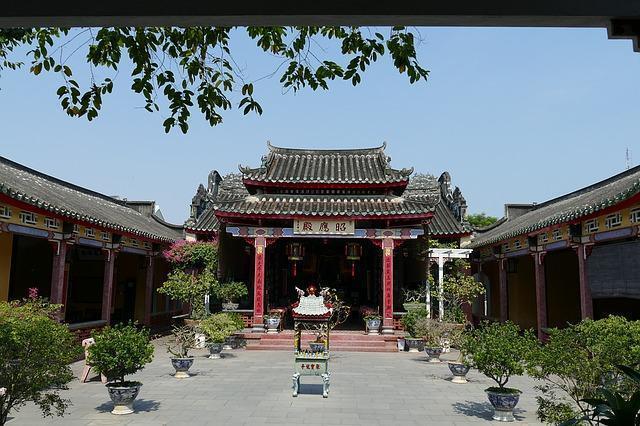
The cuisine of Hoi An
On the itinerary of immigration, Chinese imported their culture in Hoi An, blended it with Vietnamese culture. Vietnamese in Hoi An also acquire Chinese cuisine in their cuisine through dishes existing until now. These dishes are approved by major of Vietnamese in Hoi An but some changes were created to fit with the local culture. The first change is the name of Chinese dishes in Hoi An; some dishes originating from Chinese and cooked in Chinese recipe were changed in the name for Hoi An people to easily call; however, you still realize the Chinese style when tasting these dishes such as Tàu Xá sweet soup, Lường Phảnh – jelly sweet soup.
Furthermore, another change of Chinese cuisine imported in Hoi An is the ingredients of the dishes. Cao Lau noodle (Cao Lầu), Quang noodle (Mỳ Quảng) are quite similar to Chinese noodles; however, some ingredients of two kinds of noodle was changed to adapt to the ingredients in Vietnam as well as the taste of Vietnamese. Hoanh Thanh comes from China but when imported in Vietnam, the dish has a taste different from the taste in China.
The belief of Hoi An people
The Chinese immigrating to Hoi An brings their religion and belief into Vietnam; the characteristics of Chinese beliefs and Vietnamese beliefs attracted each other to create harmony in the beliefs of Minh Huong people living in Hoi An.
The beliefs of Minh Huong in Hoi An comprise in Buddhism and Deities. Buddhism in Hoi An is affected significantly by Chinese Buddhism; the bonze from China came to Hoi An and published the kinds of Buddhism in Hoi An such as Lam Te, Tao Dong. Until now, when traveling to Hoi An, tourists can recognize the Chinese marks in Bodhisattva pagodas; it worships the Buddha along with Bodhisattva and some characters in Buddhism.
The Chinese in Hoi An or Minh Huong people not only worship Buddhism but also worship the deities helping them. The Minh Huong people in the past are Chinese merchants doing business in Hoi An; therefore, they often venerated the deities helping them in the trading activities such as the god of the wealth. Hoi An people influenced by Minh Huong people also worship the god of the wealth along with their family ancestors in their house until now. Besides, the Chinese traits are shown in the worship of Mazhu who protected Chinese on the immigrating way to Vietnam in Chinese assembly halls and Quan Cong, a Chinese general well known for loyalty, sincerity, integrity, and justice in Quan Cong temple.
After my long trips to the strange lands, I really understand the meaning of the Alfred D’Souza’s quote ‘Happiness is a journey, not a destination’. My happiness is journeys that let me explore the new lands, new features of the culture there and new colors in your soul and now I want to share this happiness with you through my article about my experience in the trips. Hope that they will give useful things to your next trip…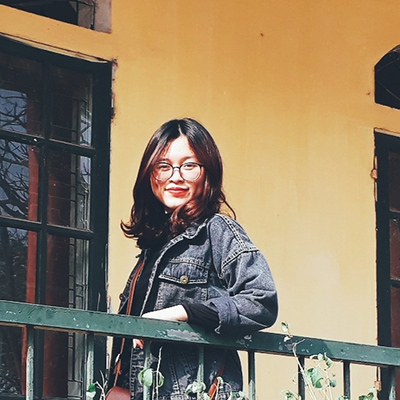 Tracy Luo
Tracy Luo
Travel Hoi An With Us To Discover The Heritage Culture:
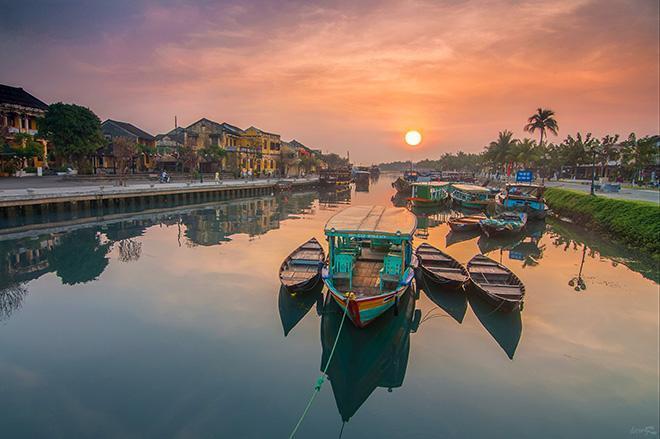 Vietnam Highlights Package 10 Days 9 Nights
Vietnam Highlights Package 10 Days 9 Nights
The most popular destinations in Vietnam with all the highlights — all in Vietnam itinerary 10 days. Discover Hanoi with many foods, structure architecture and the stunningly beautiful UNESCO World Heritage Site of Halong Bay. Moving to culturally-rich Hue then spend time in incomparable and lovely Hoi An – one of the world’s most charming towns. Finish the comprehensive Vietnam highlights tours in the South after Floating through the lush Mekong Delta, seeing vibrant Ho Chi Minh City. With same destinations in itinerary but you can start this trip from Hanoi or Ho Chi Minh city.
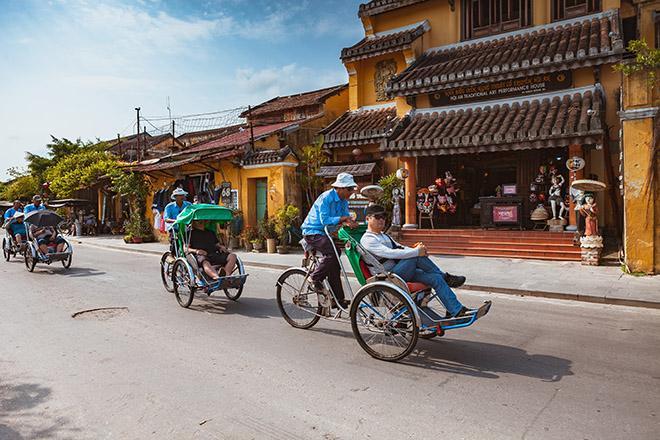 4-day be real local people in center Vietnam
4-day be real local people in center Vietnam
This 4-day tour will offer you to the most famous highlights in the Central Vietnam. You enjoy the beautiful My Khe beach in Danang city, which is one of the most famous one in the world and spend time enjoying the atmosphere of Hoi An ancient town. Especially, it offers you a day to Bana hills, where you take a long journy on cable car. Definitely, walking along Golden Bridge around this Bana area will be a wonderful experience that you never forget after the trip.
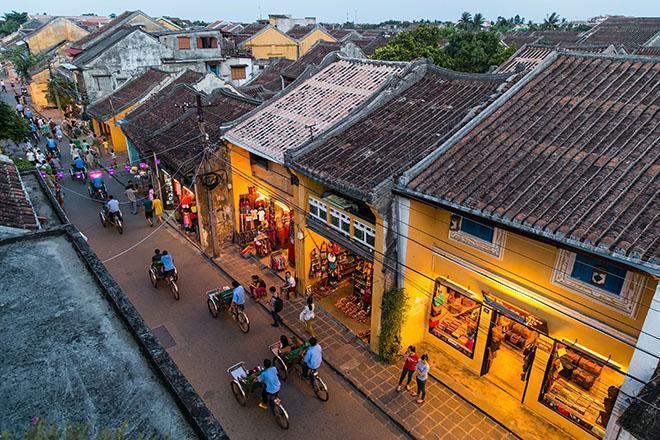 A glance of Vietnam and Cambodia 11 days 10 nights
A glance of Vietnam and Cambodia 11 days 10 nights
It’s not an overstatement that this package gives you a complete grasp of the South East Asia spirit within just 1 trip. The spectacular nature that will definitely make you hold your breath comes from Ha Long Bay – One of 7 Natural Wonders of the World while the cultural value is highlighted in Angkor Wat (Siem Reap). With various local activities like farming, float shopping, traditional cooking,… you will have enough diverse experience to gain a true insight into the 2 countries.
Or more Tours to Hoi An.




Comments